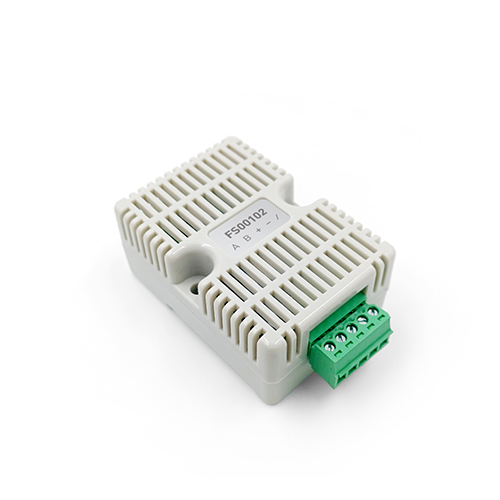Industrial temperature and humidity sensor
Industrial temperature and humidity sensor is a device used to measure temperature and humidity in the environment, which is widely used in various industrial fields, such as warehousing, pharmaceuticals, food processing, etc. Its working principle is mainly based on heat-sensitive effect and humidity-sensitive effect.
How Temperature Sensors Work
Commonly used temperature sensors in Industrial temperature and humidity sensors include thermocouples, thermistors, and semiconductor temperature sensors. Among them, the thermocouple uses the thermoelectromotive force difference of two different metals to measure the temperature, the thermistor uses the resistance of the material to measure the temperature, and the semiconductor temperature sensor uses the resistance of the semiconductor material to change with the temperature. change to measure temperature.
For a thermocouple temperature sensor, when one end of the measured temperature is in thermal contact with the thermal electrode of the thermocouple, a thermal electromotive force difference will be generated between two different metals. The other end of the thermocouple is connected to the cold junction, creating a temperature gradient that creates an electromotive force across the thermocouple. By measuring this electromotive force, the measured temperature can be deduced.
For thermistor temperature sensing, the basic principle is to use the resistance of the material to change with the change of temperature. When the measured temperature acts on the thermistor, the resistance value will change accordingly. By measuring the change in resistance, the measured temperature can be calculated.
Semiconductor temperature sensors use the resistance of semiconductor materials to change with temperature. When the measured temperature acts on the semiconductor material, the resistance value will also change. By measuring the change in resistance, the measured temperature can be calculated.
How the Humidity Sensor Works
Humidity sensors commonly used in industrial temperature and humidity sensors include capacitive humidity sensors and resistive humidity sensors. Changes in humidity to measure humidity.
For the capacitive humidity sensor, the basic principle is to use the change of the dielectric constant with the change of humidity. When the measured humidity acts on the capacitive humidity sensor, the value of the dielectric constant will change accordingly. By measuring the change of dielectric constant, the measured humidity can be calculated.
For the resistive humidity sensor, the basic principle is to use the resistance of the material to change with the change of humidity. When the measured humidity acts on the resistive humidity sensor, the value of the resistance will also change. By measuring the change of resistance, the measured humidity can be calculated.
The working principle of the Industrial temperature and humidity sensor is mainly based on the heat-sensing effect and the humidity-sensing effect. By measuring the changes in physical parameters related to temperature and humidity in the sensor, the temperature and humidity in the environment can be accurately measured, providing important data support for industrial production.








